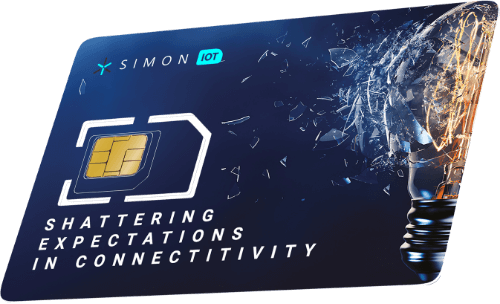IoT Connectivity Comparison M2M Connectivity Solutions in IoT
IoT Connectivity Comparison M2M Connectivity Solutions in IoT
Blog Article
IoT Connectivity Basics of Global IoT Connectivity

The world has witnessed a big transformation in the way we work together with our residing spaces. Smart homes, equipped with connected gadgets, have risen dramatically in reputation, providing enhanced convenience, security, and energy efficiency. However, reaching seamless integration of all these devices heavily relies on effective IoT connectivity solutions.
Various connectivity technologies facilitate communication between devices, ensuring that each component of the smart residence works harmoniously. Choosing the most effective IoT connectivity options for smart houses is crucial for creating an environment friendly and responsive environment. These solutions range by method of range, energy consumption, and the forms of gadgets they help, allowing customers to tailor their smart house ecosystems to their particular wants.
Wi-Fi is likely considered one of the most widely used connectivity options, primarily as a end result of its ubiquitous nature and high information transfer charges. Many smart house devices are already designed to connect effortlessly to current Wi-Fi networks. This makes adding new gadgets relatively straightforward. Tablets, smartphones, and routers can typically help multiple gadgets simultaneously, making it a handy option for smart residence fanatics.
IoT Connectivity Sim Future of IoT Technology Connectivity
However, Wi-Fi is not with out its challenges. The dependence on a stable internet connection can often lead to efficiency points, especially with multiple gadgets attempting to communicate directly. Furthermore, the vary can be restricted relying on the layout of the house. Walls and different barriers may cause sign degradation, which can hinder the efficiency of devices situated removed from the router.

Zigbee is one other compelling choice for IoT connectivity in smart houses. This expertise helps low-power units, making it suitable for battery-operated sensors and devices. Zigbee creates a mesh community, which suggests every related device acts as a relay, expanding the vary of connectivity inside the home. This is especially helpful in larger spaces where conventional Wi-Fi may battle.
IoT Connectivity Service Providers Quick Guide to IoT Connectivity
Z-Wave adds to the suite of choices out there for smart homes. It operates on a decrease frequency than Wi-Fi, which implies it can better penetrate walls and keep away from interference from other digital gadgets. Z-Wave is engineered specifically for residence automation, allowing various gadgets to interact seamlessly. The low power consumption additionally aids in battery longevity for devices that function on this network.
For functions requiring low data rates however high reliability, LoRa (Long Range) supplies an excellent various. It is especially useful for agricultural or environmental monitoring units that solely require intermittent data transmission. LoRaWAN (Low Power Wide Area Network) permits these devices to communicate over lengthy distances, making it an ideal answer for expansive properties or smart metropolis purposes.
Cellular connectivity serves as one other robust answer, primarily for units that require fixed internet entry however will not be put in close to established networks. This ensures that devices can ship and receive data over the web instantly, eliminating reliance on house Wi-Fi methods. While maybe more expensive, cellular connectivity provides the good factor about wide-reaching availability, notably in rural or hard-to-reach areas.
Bluetooth is also a significant player in the realm of smart house connectivity, significantly for personal gadgets like fitness trackers, smartwatches, and speakers. Its low power necessities make it a beautiful choice for short-range communication. Bluetooth mesh networking enhances the protocol’s functionality, enabling gadgets to communicate effectively even when separated by far.
Cloud Connectivity In IoT Subscriptions for IoT Connectivity SoC
Thread is a relatively newer protocol designed to make system connectivity easier. It also supports low-power units in a mesh network configuration. What sets Thread apart is its IPv6-based communication, which permits more simple integration with internet-based methods and services. This adaptability opens the door for future scalability as smart house technologies continue to evolve. IoT Connectivity Market.
The integration of varied connectivity protocols is significant for compatibility among gadgets. Many corporations have recognized that a single resolution won't meet all person wants, leading to multi-protocol methods that can seamlessly swap between networks. Such flexibility enables owners to customize their smart environments and connect gadgets regardless of the producer.

As customers increasingly emphasize sustainability, smart homes that facilitate energy-efficient living have gained traction. IoT connectivity solutions contribute considerably to this development. Devices can talk to optimize energy usage, adjusting heating, cooling, and lighting based on real-time data.
When choosing the right IoT connectivity solutions for smart houses, shoppers ought to fastidiously contemplate their particular necessities. Those prioritizing pace would possibly lean in course of Wi-Fi, while individuals needing to extend the range of connectivity may prefer Zigbee or Z-Wave. Budget, device compatibility, and the potential for future upgrades additionally play a big position in decision-making.
IoT Connectivity Market Survey on IoT Connectivity Technologies and Applications
Ultimately, the most effective IoT connectivity options for smart houses will enhance not solely automated convenience but also the entire living expertise by incorporating advanced technology into day by day routines. These options empower householders to manage their environments higher and stay extra sustainably, simultaneously enjoying the benefits of state-of-the-art connectivity.
In conclusion, with learn the facts here now the rapid advancements in technology, the landscape of smart house connectivity continues to evolve. As more devices enter the market and extra householders embrace automation, the importance of sturdy connectivity options becomes increasingly obvious. Those who invest time in understanding and implementing these options will undoubtedly contribute to creating extra intelligent, efficient, and gratifying living areas.
- Various connectivity protocols like Zigbee, Z-Wave, and Wi-Fi cater to totally different smart home gadgets, enhancing interoperability and system communication.
- Mesh networking capabilities allow units to communicate extra efficiently, increasing coverage and decreasing dead zones inside bigger homes.
- Low-power wide-area networks (LPWAN) present energy-efficient solutions for battery-operated units, promoting longer operational lifespans.
- The integration of edge computing ensures real-time information processing, reducing latency and enhancing total system responsiveness.
- Cloud-based IoT platforms offer in depth data analytics, enabling customers to optimize system usage and energy savings of their smart homes.
- Security options, such as end-to-end encryption and common firmware updates, are essential for safeguarding smart home knowledge from potential threats.
- Dual-band routers can support both 2.4 GHz and 5 GHz connections, offering flexibility and improved performance for various smart gadgets.
- User-friendly cellular functions enhance the management of smart home devices, enabling seamless interactivity and scheduling functionalities.
- Interoperability standards, such as Matter, facilitate collaboration between different manufacturers, selling seamless cross-device communication.
- 5G technology guarantees ultra-low latency and higher bandwidth, potentially revolutionizing smart house experiences with sooner data transfer charges.
What are the several varieties of IoT connectivity solutions for smart homes?undefinedThere are a number of IoT connectivity options, including Wi-Fi, Zigbee, Z-Wave, Cellular, and LoRa. Each offers totally different advantages in terms of vary, pace, energy consumption, and scalability, allowing for tailored solutions based mostly on specific smart house wants.
How does Wi-Fi evaluate to Zigbee for smart residence devices?undefinedWi-Fi is faster and widely used for high-bandwidth purposes, while Zigbee is designed for low-power, low-bandwidth duties, making it ideal for devices that require long battery life. Zigbee also supports mesh networking, enhancing vary and connectivity amongst gadgets.
IoT Global Connectivity Smart Connectivity for IoT Services
What elements ought to I think about when selecting an IoT connectivity solution?undefinedConsider elements like vary, energy consumption, gadget compatibility, safety features, and the particular wants of your smart house ecosystem. Assess what number of units you plan to connect and their energy necessities, guaranteeing the chosen resolution helps your setup.

Are there security dangers associated with IoT connectivity options for smart homes?undefinedYes, safety risks embody unauthorized access and data breaches. It’s crucial to determine on solutions with sturdy encryption and regular updates. Implementing sturdy passwords, firewalls, and keeping firmware updated can considerably enhance your smart home’s security - IoT Connectivity Provider.
Web Connectivity In IoT Services and Solutions for IoT Connectivity
Can I combine multiple IoT connectivity options in my smart home?undefinedAbsolutely! Many smart house methods help integration across numerous protocols, allowing units using different connectivity solutions to work collectively seamlessly. This flexibility permits customers to optimize efficiency and compatibility.
What position does the cloud play in IoT connectivity for smart homes?undefinedThe cloud enables distant administration, knowledge storage, and advanced analytics for smart home gadgets. It facilitates communication between units and consumer interfaces, allowing for real-time monitoring and management from anyplace by way of internet connections.
Industrial IoT Connectivity Providers of Cellular IoT Connectivity
How can I guarantee compatibility among different smart residence devices?undefinedCheck for compatibility labels and make sure that devices observe widespread standards like Zigbee or Z-Wave. Research ecosystems, such as Google Home or Amazon Alexa, that assist a variety of gadgets, simplifying integration and control.
What is the way ahead for IoT connectivity solutions for smart homes?undefinedThe future is leaning towards enhanced interoperability, improved safety protocols, and the rise of 5G technology. These developments will supply faster speeds, higher device density, and lower latency, enhancing the general smart house expertise.
How can I troubleshoot connectivity issues in my smart home?undefinedStart by checking the ability sources and ensuring units are within vary of their connectivity hub. Restart routers and devices as wanted. Use both app diagnostics or manufacturer assist resources for particular troubleshooting steps tailor-made to the units click for more in query.
Report this page